Folklore around the world: travel to india. Traditions, parties, habits and customs of one of the most fascinating places in the world.
Folklore around the world: travel to india
Indian holidays are one of the plus aspects folkloristic ed exciting of the cultural heritage of this country: during the year, religious celebrations, festivities dedicated to the birth or death of historical or mythological characters and rites punctuated by the alternation of the seasons follow one another continuously giving life to events full of colors and energyFor western tourists, to hit more during a trip to India it is precisely the way in which spirituality influences every aspect of people's lives, much in big cities, as in small urban centers. If mysticism and religious customs strongly permeate everyday life, during festivals and ceremonies, Indians flock to the streets, in squares and places of worship, unleashing overwhelming celebrations
Holidays celebrated in India are like this various and numerous to make it almost impossible to summarize them exhaustively: almost in every season and location, it is possible to come across festivals more or less known and loved by the Indians
Here are some of the most beautiful holidays and ceremonies….
Aarti ceremony
Aarti is a Hindu purification ritual which is celebrated as a good omen or to thank a deity on many different occasions. The most fascinating and scenic Aarti are held in the cities that rise along the banks of the sacred river, il Gange.
During the ceremony, which revolves around the symbolism of fire and light, small torches light up, generally represented by saucers sprinkled with flower petals in which a cotton wick soaked in ghee burns (the traditional Indian clarified butter) or camphor.
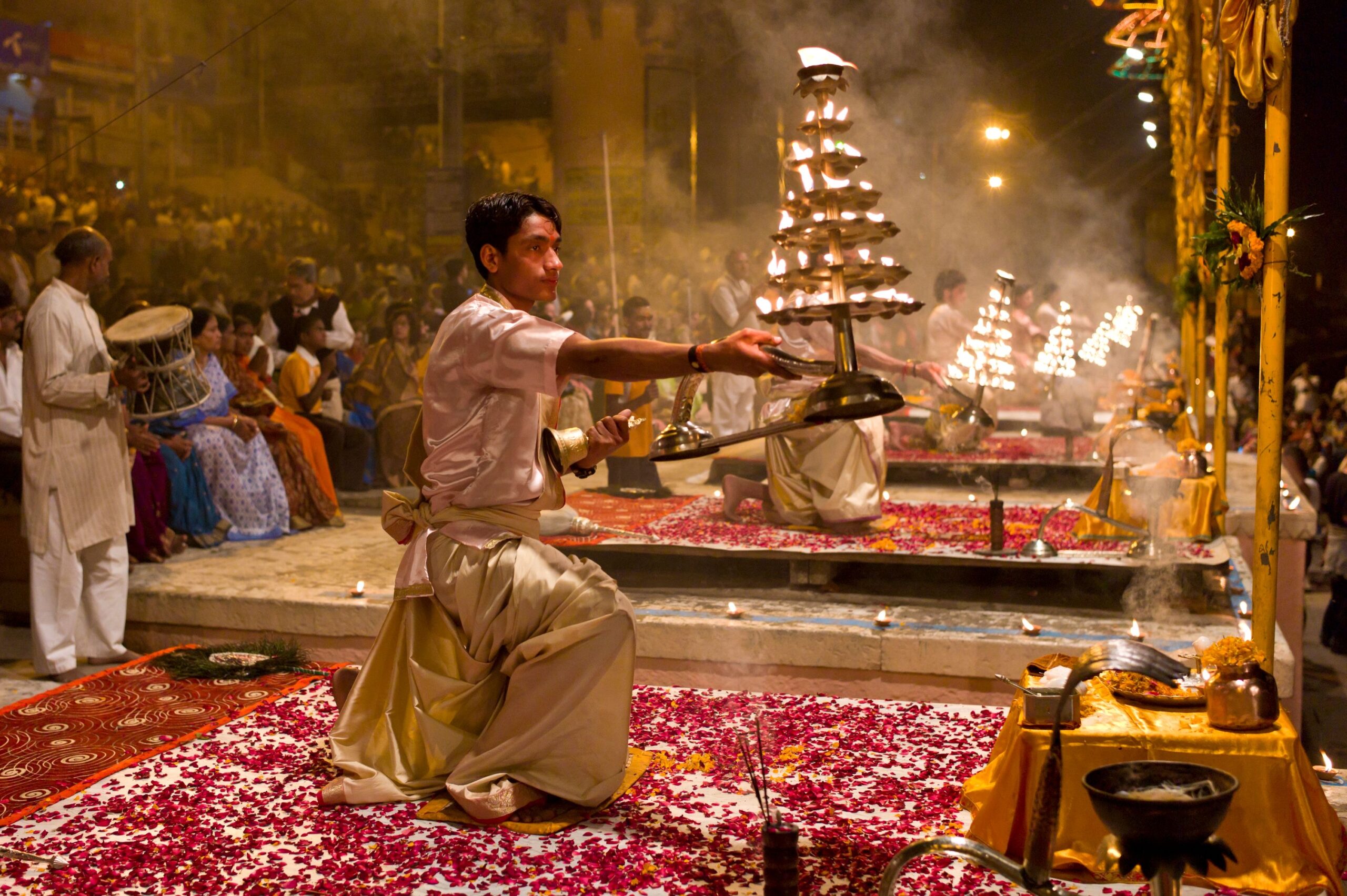
In the most important and famous rituals, like the one held at sunset at the sacred city of Varanasi, l’Aarti (The, more precisely, the Ganga Aarti) turns into a big open-air party, with the steps that descend towards the waters of the Ganges illuminated by the flames of hundreds of candles, but also with traditional songs and dances wrapped in the exotic scent of incense.
Diwali
Diwali is there “festival of lights“, one of the most important and heartfelt holidays in India, celebrated by Hindus, but also by Buddhists, dai jainisti e dai sikh. The origins of this festival are lost in time and vary between the different religious confessions, but also from region to region: Diwali is inspired by the mythological episode of return of Rama, incarnation of the deity Vishnu, in his city, Ayodhya, after several years of exile. Today, the anniversary celebrates the victory of light over darkness and good over evil, with five days of celebrations taking place in a large part of the Indian territory, usually between October and November.
Many rituals accompanying Diwali, as well as traditions, which also vary from place to place: from the preparation of typical dishes and sweets, all candles and at torches that are placed in every house and in every corner of the city, illuminating the night and creating suggestive atmospheres.

Often, Diwali evenings are illuminated even by adults fireworks displays.
My mom
Onam is a holiday held every year, for about ten days between the end of August and the beginning of September, particularly felt in the state of Kerala: the party celebrates the harvest, even if its origins, as in the case of any Indian holiday, intertwined with mythological tales and ancient traditions.
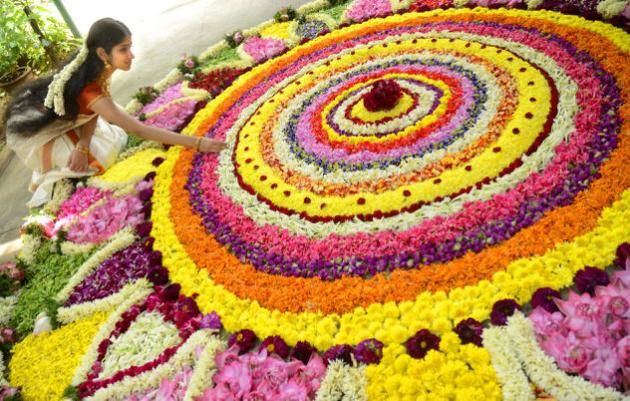
Many events, the rites and customs that characterize Onam: from the elephant parade of’Athachamayan, to the enchanting decorations made with flowers, passing through traditional songs and dances such as the Pulikali, or the “tiger dance”, the streets of the cities of Kerala are filled with a thousand sounds and colors, offering a very engaging show.
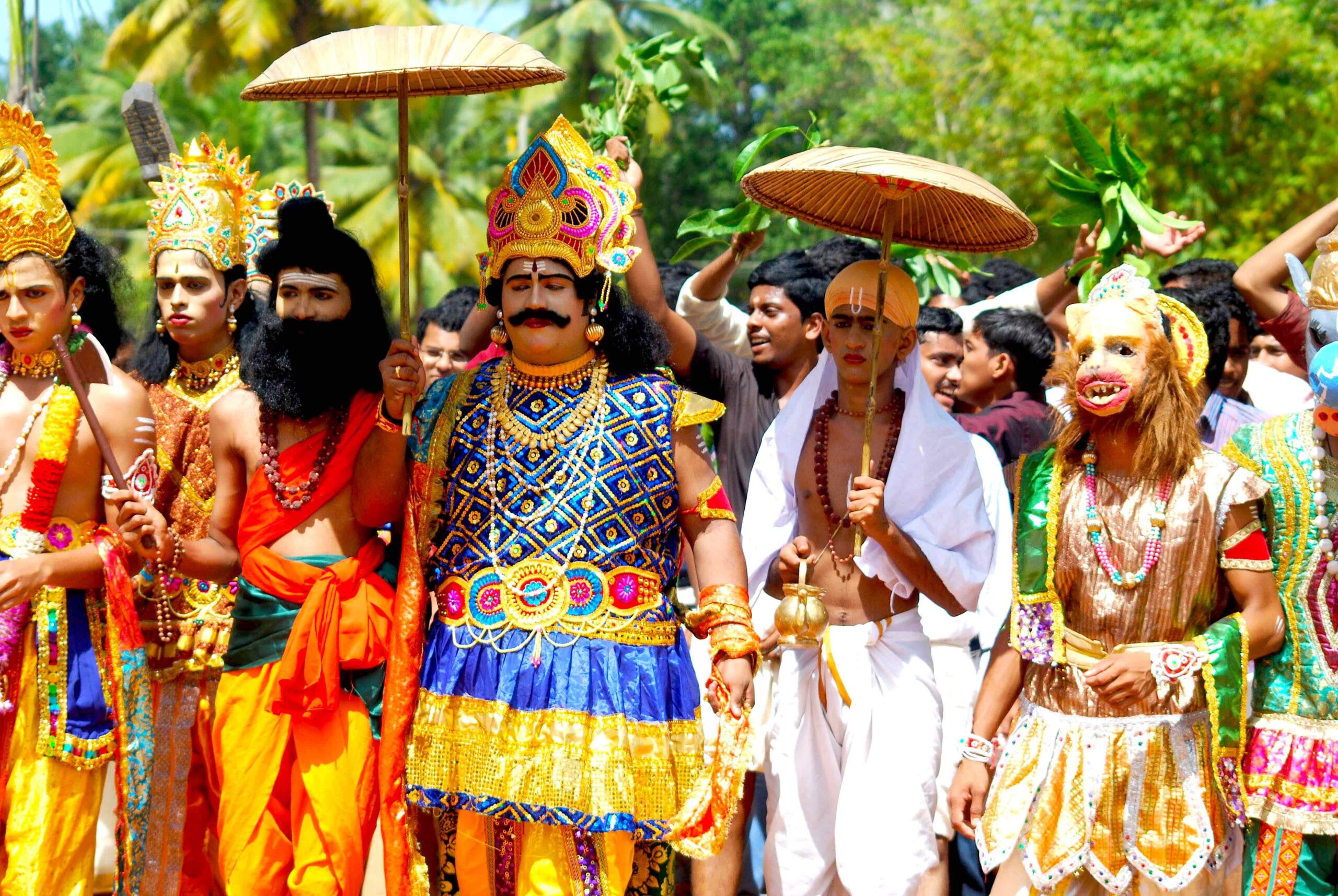
Holi: the festival of colors
L’Holi Festival, the festival of colors of India, it is probably the most famous of the Indian holidays.
Exported in the form of colorful music festivals now all over the world, Holi is a celebration of the end of winter and of’early spring, as well as the rebirth and flowering of life, held every year in March, after the full moon of the month of Phalgun (according to the Hindu calendar).

From the streets of New Delhi to those of Mumbai, passing through the beaches of Goa, Holi is celebrated practically everywhere in India: as in a great carnival, the atmosphere is filled with joy and happiness, while adults and children have fun with the launch of water balloons and colored powders in the air.
In the various cities there are events based on songs and dances, from which it is a must to come out entirely covered in a mix of all the colors of the rainbow.
During the Holi, the caste differences disappear e, according to tradition, any feeling of resentment or distrust towards others is abandoned, to live a day dedicated to union and brotherhood. Holi is also there Valentine's day, who celebrate their union by painting each other's faces with colored powders.
On the evening before the Holi, the’Holika dahan, a ritual in which large bonfires are set up, which by burning evoke the pyre in which, according to the Hindu tradition, perished the demon Holika.
Pushkar Fair
The Pushkar camel fair, The Pushkar mela, is a great event held between the end of October and the beginning of November near the town of the same name, in the heart of the desert region of Rajasthan.
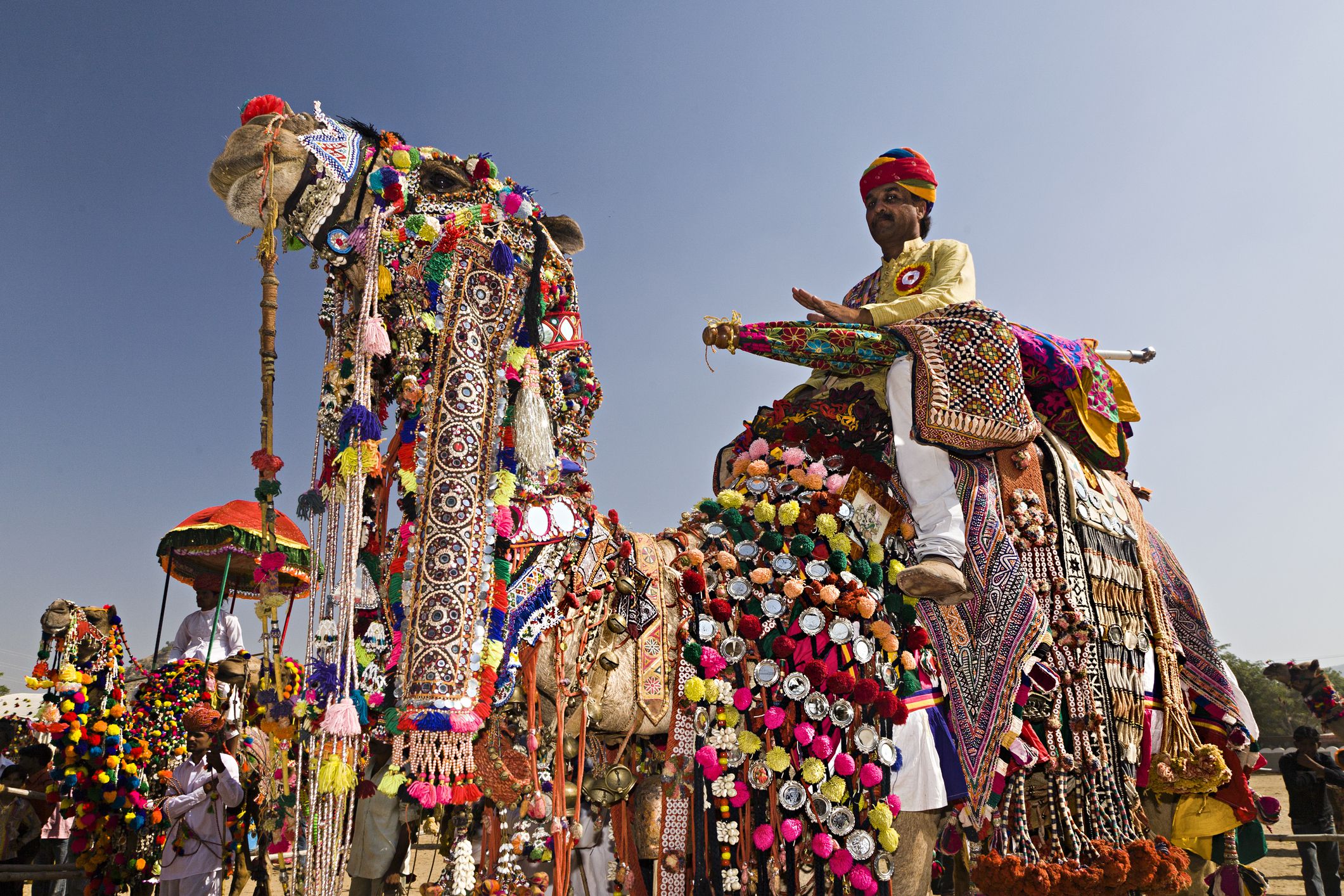
The fair represents a very special appointment: in fact, it is not exclusively an event with commercial purposes, but also of an important local holiday.
Hundreds of breeders, with their herds of camels (and not camels in spite of the name of the event) following, but also craftsmen e merchants they gather near the Pushkar Lake, then, according to legend, from the water that flowed from a lotus flower that fell to the god Brahma.
In the days of the fair, you can buy very original souvenirs, taste typical dishes of the place, attend competitions and shows of all kinds, as well as purification ceremonies that are held on the enchanting steps that descend to the waters of the lake.
Speaking of typical Indian clothes instead……
The Sari
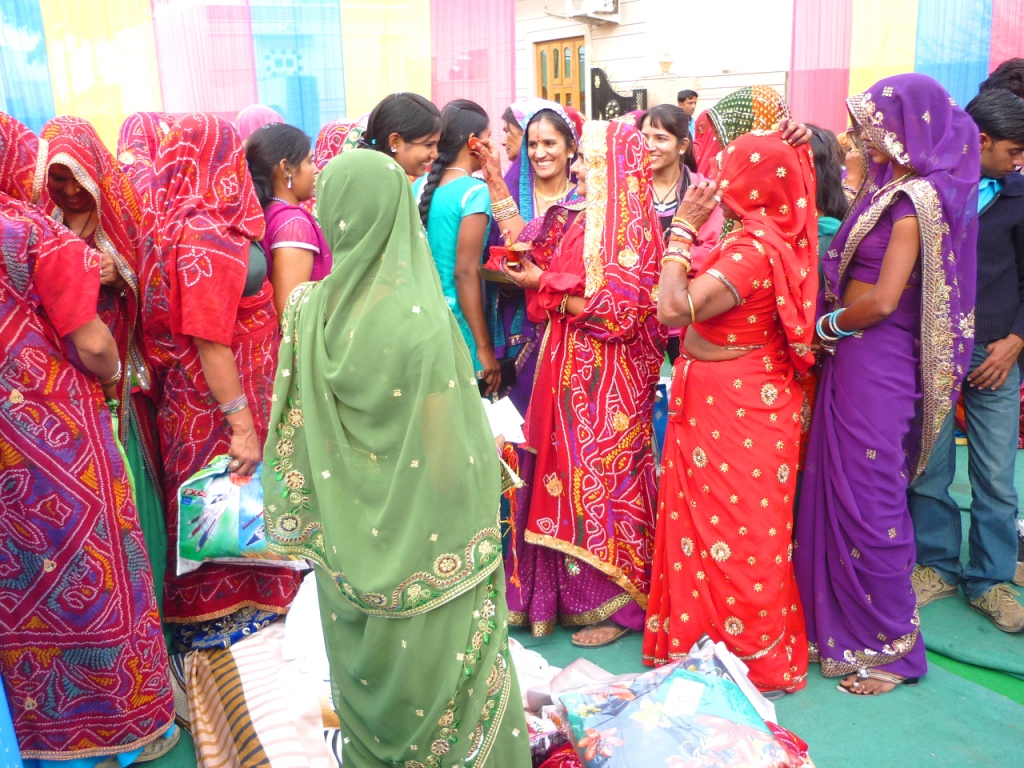
The sari is the classic Indian women's dress, made special and rich by silver or gold embroidery. A piece of silk or cotton fabric about 5 meters and _ which can be high from 1 a 1,40 meters; it rests on the waist by inserting the upper edge into the waistband of the petticoat. The remaining part of the patch is passed over the legs, then on the back and softly draped from the waist to the breast from right to left. In addition to the petticoat, the other indispensable garment is the choli, a blouse that covers the breasts, leaving life uncovered. This garment, in addition to its versatility in terms of movements (it can be used to drive the car, to work, even play sports, to travel) always guarantees good protection from the sun , from wind and humidity. Easy to wash and equally easy to iron, very comfortable to store not that nice for its effect on the person: that's why the sari has managed to survive in our age. “Components” fundamental in the creation of the sari are the particular fabrics, the combinations of colors, variations in the combination of colors, the designs both on the whole piece and on the side border. . The sari can be a true work of art, even every Indian language has its own vocabulary regarding its creation. The variations of the designs and weaving are so particular and different that every Indian woman can recognize which sari is in front of her: now throughout the country there are varieties from all regions. Also in India there are variants for all occasions: to work or to take care of the chores you will use one in printed cotton or silk; for a meeting, one in brocade or embroidered with zari. Even more precious are the saris from Orissa and Andhra Pradesh also called ikat that develop floral designs, of animals and intertwined geometric shapes in various colors, and for the complexity of the work (everything is woven on the loom by hand) they are together with the famous sambalpuri (sari in seta cruda) reserved for ceremonies. equally fabulous are the Varanasi saris, at Kanchipuram e in Bangalore, always of heavy silk, which can be decorated with designs in gold or silver, coming to be precious brocades that remember, in their wealth, the clothes in the mosaics of Byzantium. The Bengal saris are also very special, i baluchari, which feature decorations of epic appeal, especially from the Ramayana, only on the edge and on the pallù, making them similar to medieval tapestries.
Other commonly used clothes
He Salvar-Kamiz. This dress is of Arabic derivation. By Salvar we mean pants, that start from life, shaking hand by hand up to the ankles; Kamiz is worn on them, which initially covered the whole body: this one has a rounded neckline,pointed or square, it is cut straight or trapezoid, with the final part wider. In the first decades of the century it was worn only by girls and girls, but lately it is spreading a lot, also for its elegance and practicality from all points of view.

Il Kurta
E’ the men's Indian shirt, and unlike the Kamiz the neckline is always round and the flare is minimal. It is also very practical and comfortable. They are generally buttoned on the chest, with pleasant geometric embroidery along the buttons, the neck and the edge of the sleeves.
If you want to discover all the traditional Indian clothes, give a’ look here: https://www.innfinity.in/it/limitless/29-states-of-india-and-their-dresses-which-are-simply-stunning/
Let's go and discover some curiosities about India……
- Who are the sadhus?

- Sadhu (in Sanskrit sādhus) the so-called Indian holy men or baba are identified. To be clear, they are those people who in India often meet dressed in a succinct and unkempt manner and with a painted face, often gathered in prayer or dedicated to asking for alms outside the temples.
Theirs is a life of renunciation of earthly passions called Moksha, with the purpose of the pursuit of liberation from Maya, the earthly illusion and with this the end of the cycle of reincarnations (Samsara).
This would ultimately mean stopping the cycle of earthly sufferings by achieving fusion into Cosmic Consciousness, or in the Se ', whatever you want to call it.
It goes without saying that, whether or not you are willing to believe in this possibility, few succeed in achieving this goal in the present life.
The Sadhu to facilitate this process chooses a life of renunciation and holiness.
- When a baby is born, then, they draw a black dot on his cheek or head, called kali bindi, because they believe that, if too much admired, can get sick. So they focus the attention of the beholder on the black point, so as to ward off bad luck.

- Cut your hair to zero and offer it to the temple, or shave your head when a relative dies
Hair for Indians, they represent the ego. It is no coincidence that Indian hair is wonderful. Shaving your hair means subduing the ego. The moment they are donated to a temple or for one puja, therefore they represent what is most precious to you; both women and men shave, the children, riches and Poors, demonstrating that one must never lose humility of mind.
In case there is a loss in the family, it will be only males, children and adults, to shave his head. Everyone wears white clothes, white and pure. The males of the family indeed, with this gesture they show that they will take care of the family without any ego, treating everyone equally.
- Indian women marry cows, i cani, trees.
You got it right….some people according to the Indians, they are born in conditions of natural "bad luck", for which, who will marry them, some good things will pass.
To avoid problems, the bad luck person has to marry a cow, a dog or a tree, so as to pass on their bad luck to them.
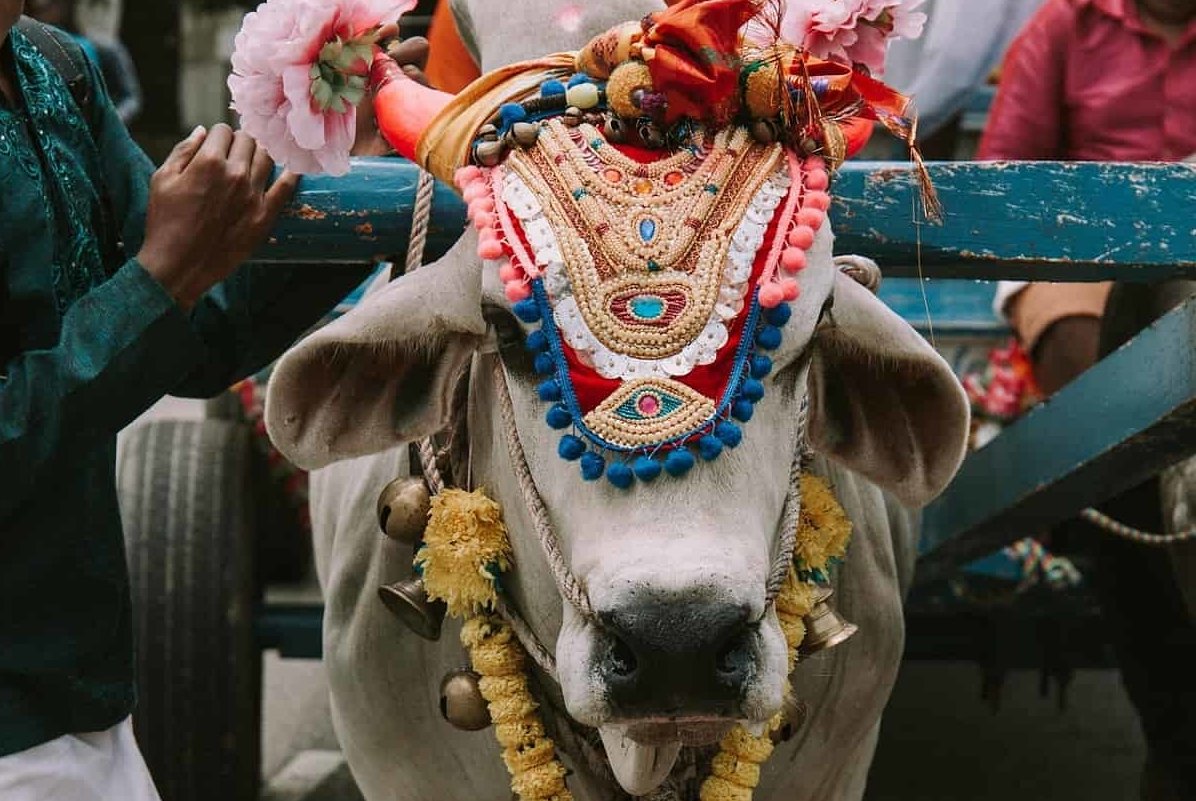
Consequently, the person they will marry in "second marriage" will be able to rest assured.
In addition, many animals are worshiped in the Hindu religion but there is one that reaches the utmost sacredness: the Gau mata or "mother cow" or sacred cow. Carried in procession, decorated during the holidays, slaughtering is now prohibited. Unlike many other animal species, the cow not only represents a divinity but symbolizes protection, prosperity, motherhood.
- eat while sitting on the floor cross-legged…
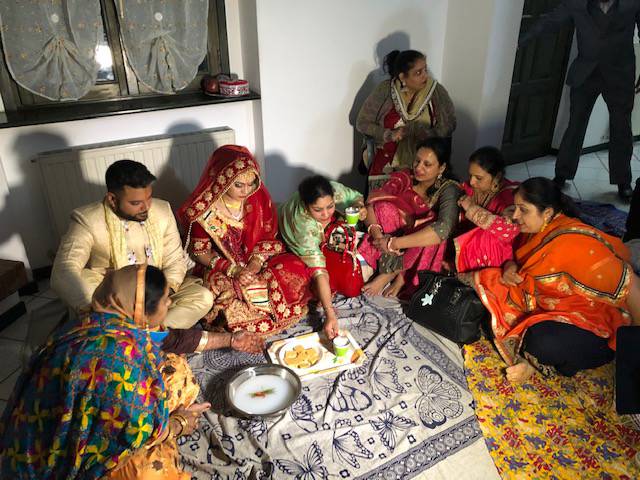
The position assumed to eat sitting on the floor is cross-legged and is called "sukhasana”: in this way the body relaxes and starts the digestion process faster, also thanks to the forward flexions to take food that favor the production of digestive liquids.
Furthermore, getting up and sitting down stimulates the movements of the knee ligaments, averting the risk of arthritis. Handyman Indian great-grandmothers know something!
I hope you enjoyed this first appointment with folklore and curiosities from the world…
I look forward to seeing you next week with a new appointment to continue traveling among the colors and customs of the world even from home….

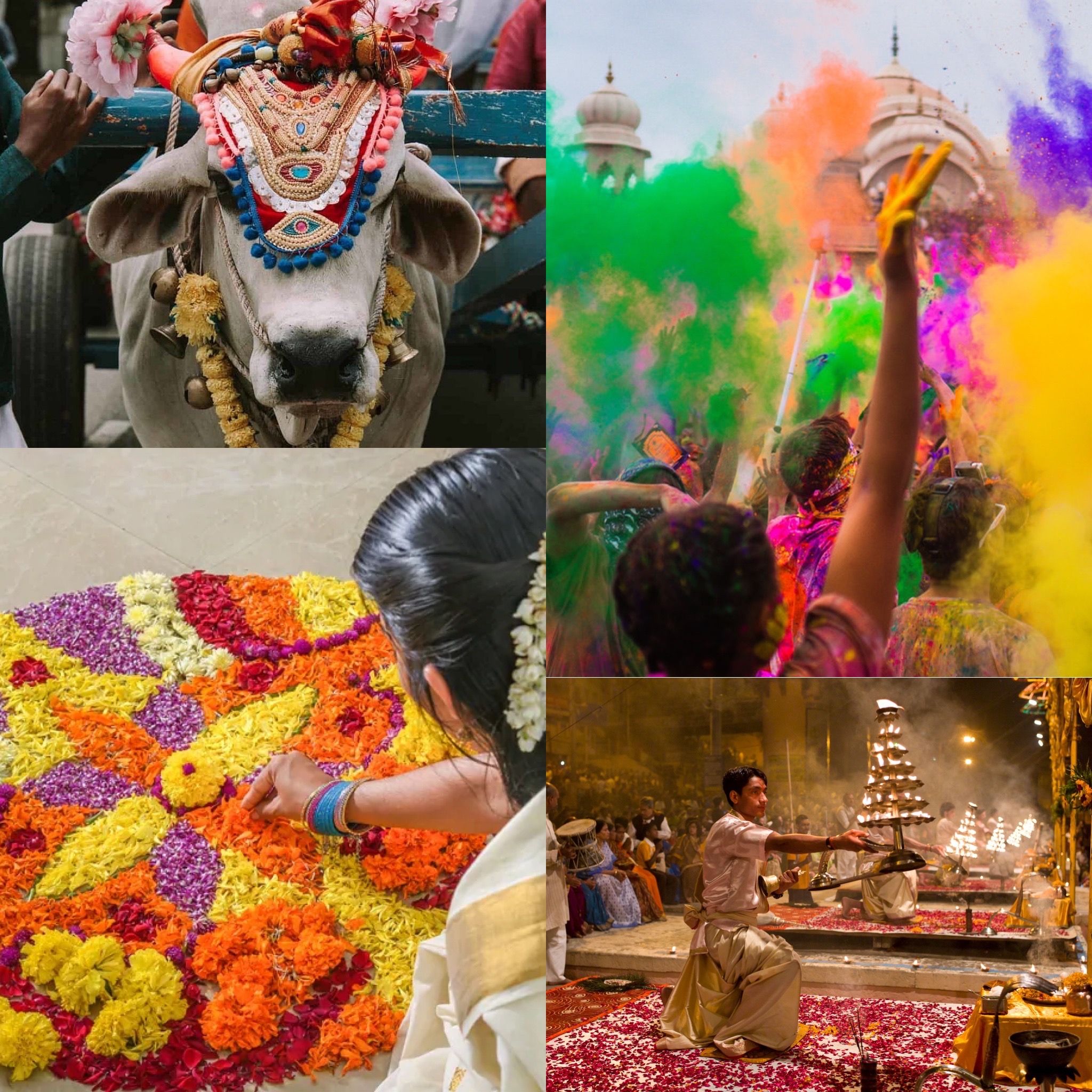
![[:it]Autumn winter shopping guide 2020-2021[:]](https://www.littlelooks.it/wp-content/uploads/2020/10/guida-allo-shopping-autunno-inverno-2020-2021-300x300.jpg)
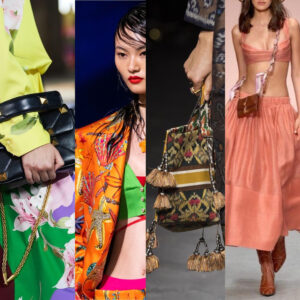
![[:it]The trendiest beachwear looks[:in]THE TRENDIEST SEA LOOKS[:]](https://www.littlelooks.it/wp-content/uploads/2018/07/look-mare-300x300.jpg)